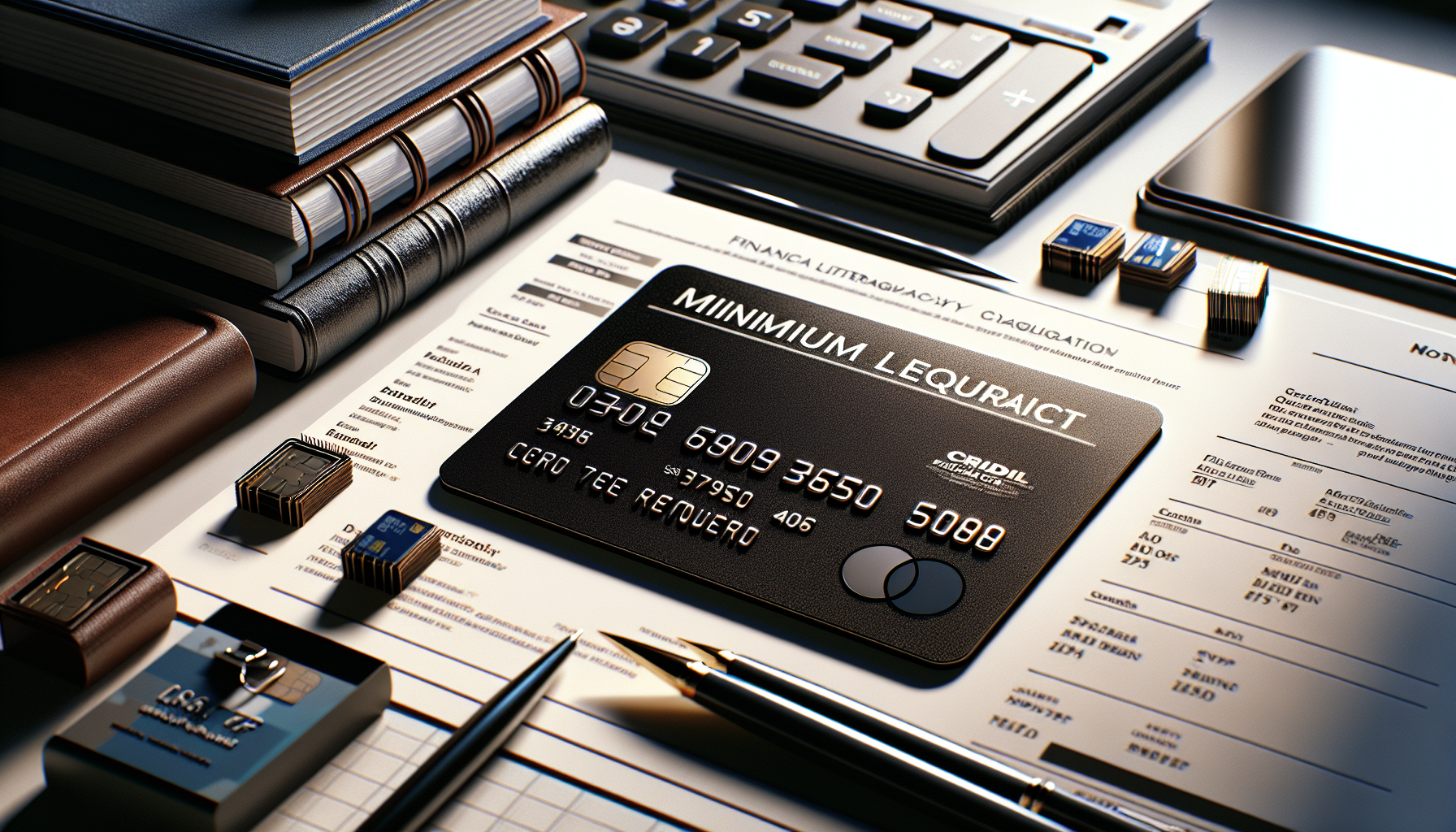What is Annual Percentage Rate (APR)?
When it comes to credit cards, understanding the Annual Percentage Rate (APR) is crucial for managing your finances effectively. APR represents the annual cost of borrowing money, including fees, expressed as a percentage. It reflects the price you pay for using a credit account, such as credit cards, loans, or lines of credit.
APR is a key factor to consider when comparing credit card offers and finding the right card for your needs. By understanding how APR works and the different types of APRs associated with credit cards, you can make informed decisions about your credit card usage and minimize the amount of interest you pay over time.
Definition of APR
APR, or Annual Percentage Rate, is a standardized way of quantifying the cost of borrowing money. It includes not only the interest rate but also other fees related to the account, such as origination fees, closing costs, and insurance. The Truth in Lending Act (TILA) requires lenders to disclose interest rates as APRs, making it easier for consumers to compare different credit options.
For credit cards, the APR represents the annual interest rate charged on outstanding balances. If you carry a balance on your credit card from month to month, you will be charged interest based on the APR. It’s important to note that credit card interest compounds, meaning that if you don’t pay off your balance in full each month, you’ll be charged interest on top of the interest already accrued.
APR vs. Interest Rate
Although often used interchangeably, APR and interest rate are not the same thing. The interest rate is the percentage of the principal that a lender charges for borrowing money. APR, on the other hand, includes both the interest rate and other fees associated with the loan or credit account.
For credit cards, the APR and interest rate are typically the same, as there are usually no additional fees included in the APR calculation. However, for other types of loans, such as mortgages or personal loans, the APR may be higher than the interest rate because it includes additional costs like origination fees and closing costs.
Types of Credit Card APRs
Credit cards often have different APRs for various types of transactions, such as purchases, balance transfers, and cash advances. Understanding the different types of APRs can help you manage your credit card usage more effectively and avoid unexpected interest charges.
Some common types of credit card APRs include:
Purchase APR
The purchase APR is the interest rate charged on new purchases made with your credit card. This APR applies when you carry a balance from month to month instead of paying off your statement balance in full. Most credit cards offer a grace period, typically 21 to 25 days, during which you can pay your balance in full without incurring interest charges on new purchases.
If you don’t pay your balance in full by the due date, interest will start accruing on your outstanding balance from the date of each purchase. To avoid paying interest on purchases, it’s best to pay your credit card bill in full and on time every month.
Introductory APR
Many credit cards offer introductory or promotional APRs to attract new customers. These limited-time offers provide a lower APR, often 0%, on specific transactions like purchases or balance transfers for a set period, typically 6 to 18 months. Introductory APRs can be an excellent opportunity to save on interest charges or pay down existing debt.
However, it’s crucial to read the fine print and understand the terms of the introductory offer. Once the promotional period ends, the APR will revert to the regular, higher rate. Be sure to plan accordingly and pay off your balance before the introductory period expires to avoid accruing interest at the higher rate.
Cash Advance APR
The cash advance APR applies when you borrow cash from your credit card, such as withdrawing money from an ATM or using convenience checks. Cash advance APRs are typically higher than purchase APRs and often lack a grace period, meaning interest starts accruing immediately upon the cash advance transaction.
In addition to the higher APR, cash advances often incur transaction fees, usually a percentage of the advanced amount or a flat fee, whichever is greater. Due to the high costs associated with cash advances, it’s generally best to avoid them unless absolutely necessary.
Penalty APR
A penalty APR is a high interest rate that credit card issuers may apply to your account if you make late payments, exceed your credit limit, or otherwise violate the terms of your credit card agreement. Penalty APRs can be significantly higher than your regular APR, sometimes exceeding 29.99%.
Penalty APRs can apply to your entire balance, including existing purchases, balance transfers, and cash advances. To avoid triggering a penalty APR, always make your credit card payments on time and stay within your credit limit. If you do incur a penalty APR, contact your card issuer to discuss options for removing it, such as making on-time payments for several consecutive months.
Factors Affecting Credit Card APR
Several factors can influence the APR you receive on a credit card, including your credit score, the type of card you choose, and market conditions. Understanding these factors can help you secure a lower APR and save money on interest charges over time.
Some key factors that affect credit card APRs include:
Credit Score and APR
Your credit score is one of the most significant factors in determining your credit card APR. A higher credit score indicates to lenders that you are a low-risk borrower, which can result in lower APRs. Conversely, a lower credit score may lead to higher APRs, as lenders view you as a higher-risk borrower.
To improve your chances of getting a lower APR, focus on maintaining a good credit score by paying your bills on time, keeping your credit utilization low, and avoiding opening too many new accounts at once. Regularly monitoring your credit report and disputing any errors can also help ensure your credit score accurately reflects your creditworthiness.
Fixed vs. Variable APR
Credit cards can have either a fixed or variable APR. A fixed APR remains constant and does not change based on external factors. In contrast, a variable APR can fluctuate based on an underlying index rate, such as the U.S. Prime Rate, plus a margin determined by the card issuer.
Variable APRs are more common than fixed APRs and can change over time as the index rate fluctuates. If the index rate increases, your variable APR will also increase, resulting in higher interest charges on your outstanding balance. It’s essential to be aware of whether your card has a fixed or variable APR and to factor potential rate changes into your budget and debt repayment strategy.
How to Compare Credit Card APRs
When shopping for a new credit card, comparing APRs across different cards can help you find the best deal and save money on interest charges. However, comparing APRs can be tricky, as there are several factors to consider beyond just the interest rate.
Here are some tips for comparing credit card APRs:
Reading the Fine Print
Before applying for a credit card, carefully review the card’s terms and conditions, paying close attention to the APR disclosure. The Truth in Lending Act requires credit card issuers to disclose APRs clearly and prominently, making it easier for consumers to compare different cards.
Look for information on the various APRs associated with the card, such as the purchase APR, balance transfer APR, cash advance APR, and penalty APR. Note any introductory or promotional APRs and their durations, as well as whether the APRs are fixed or variable.
Calculating Interest Charges
To accurately compare credit card APRs, it’s helpful to understand how interest charges are calculated. Most credit card issuers use the average daily balance method, which involves calculating your balance each day in the billing cycle, adding those balances together, and then dividing by the number of days in the billing cycle.
Once you have your average daily balance, you can calculate your monthly interest charge by multiplying the average daily balance by the monthly periodic rate (APR divided by 12) and the number of days in the billing cycle. Comparing the interest charges across different cards can give you a more accurate picture of the actual cost of borrowing.
Tips for Reducing Credit Card Interest
While shopping for a low-APR credit card can help you save money on interest charges, there are also several strategies you can use to reduce the amount of interest you pay on your existing credit cards.
Here are some tips for reducing credit card interest:
Pay Balance in Full
The most effective way to avoid paying interest on your credit card purchases is to pay your balance in full each month. By paying your statement balance in full by the due date, you can take advantage of the grace period and avoid interest charges altogether.
If you’re unable to pay your balance in full, try to pay as much as you can above the minimum payment to reduce your average daily balance and minimize interest charges. Consider using a budgeting tool or setting up automatic payments to help you stay on track with your credit card payments.
Consider Balance Transfer Cards
If you’re carrying a high-interest balance on one or more credit cards, consider transferring your balance to a card with a lower APR or a 0% introductory APR on balance transfers. Balance transfer cards can help you save on interest charges and pay off your debt more quickly.
When comparing balance transfer offers, be sure to factor in any balance transfer fees, which are typically a percentage of the transferred amount. Also, note the duration of the introductory APR period and have a plan in place to pay off your balance before the promotional rate expires.
By understanding credit card APRs, comparing offers carefully, and implementing strategies to reduce interest charges, you can make the most of your credit cards while minimizing the cost of borrowing. Remember, the key to success is to use credit responsibly, pay your bills on time, and stay within your budget.
See also:
- What Is Purchase Rate on Credit Card: Types, Definition, and How It Works
- What Is a Money Transfer Credit Card: A Complete Guide
- What is Minimum Payment on Credit Card: Everything You Need to Know
- What is the Minimum Payment on a Credit Card: Everything You Need to Know
- How to Get a Credit Card for the First Time – Ultimate Guide




